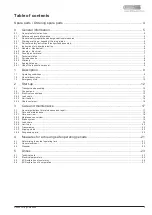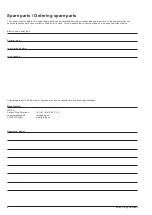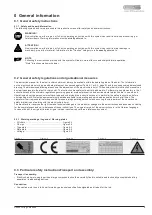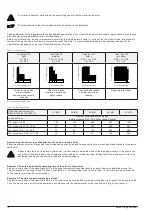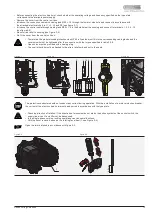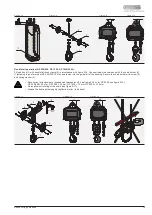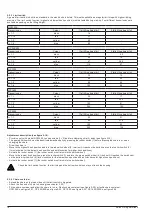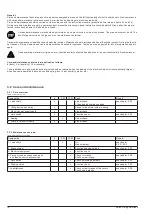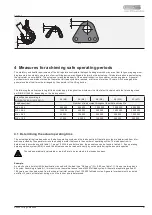
8
Swiss Lifting Solutions
Improper use comprises:
• exceeding the defined maximum permissible load capacity
• pulling the load diagonally (maximum angle 4°, see figure 0-6)
• heaving, pulling or dragging the load
• transporting persons
• moving loads over persons
• standing under suspended loads (see Figure 0-7)
• transporting excessive loads
• pulling on the control cable
• failing to observe the load hook constantly
• running the chain over edges
• failing to observe the load constantly
• allowing the load to fall due to a slack chain
• use in an explosive environment
Refer also to chapter 0.3.
General operating conditions:
• Ambient temperature ............................. : -15 °C to +50 °C
• Humidity ................................................. : max. 80% relative humidity
• Protection class ..................................... : IP 65
• Electromagnetic compatibility ................ : Immunity, industrial area
We recommend equipping GIS chain hoists working outdoors with a canopy to protect them from the weather or to move the chain hoist,
trolley and travel drive under a canopy when not in use. Special operating conditions can be agreed in individual cases with the manu-
facturer. After consultation, appropriate, optimised equipment, and important information for safe, low-wear use can be supplied. The
intended use of the electric chain hoist likewise assumes the adherence to the operating, maintenance and servicing prescribed by the
manufacturer.
The electric chain hoists of the GP types are lifting equipment for various loads. They can be installed as stationary or mobile units, while
a lateral oscillation must be ensured. The electric chain hoists are manufactured in accordance with the latest technical developments and
recognised safety standards, and are tested for safe operation by the manufacturer. Electric chain hoists are approved by various interna-
tional classification societies such as TÜV and others. Electric chain hoists of the above types may only be used when in an acceptable
technical condition, in accordance with their intended use, by trained personnel in a safe and responsible manner.
0.6 Appropriate use
0.5.2 Warranty
The warranty is void if the installation, operation, testing and maintenance is not carried in accordance with this instruction manual. Re-
pairs and troubleshooting under warranty may only be carried out by qualified persons after consultation and agreement with the
manufacturer/supplier. Any modifications to the product or the use of non-original spare parts will void the warranty.
0.5.1 Periodic checks
Each device/unit operator should adequately note all checks, maintenance and inspections performed in the inspection pass, and have
these confirmed by the competent person in charge. Incorrect or missing entries will lead to forfeiture of the manufacturer's warranty.
Devices and cranes are to be checked periodically by a specialist. Primarily, visual and functional checks are to be carried out,
whereby the state of components with respect to damage, wear, corrosion or any other changes is determined. In addition,
safety equipment is assessed for completeness and efficiency. It may be necessary to dismantle the equipment to correctly
assess wear parts.
Load-bearing parts must be inspected over their entire length, including covered or hidden parts.
All periodical inspections should be arranged by the operator.



